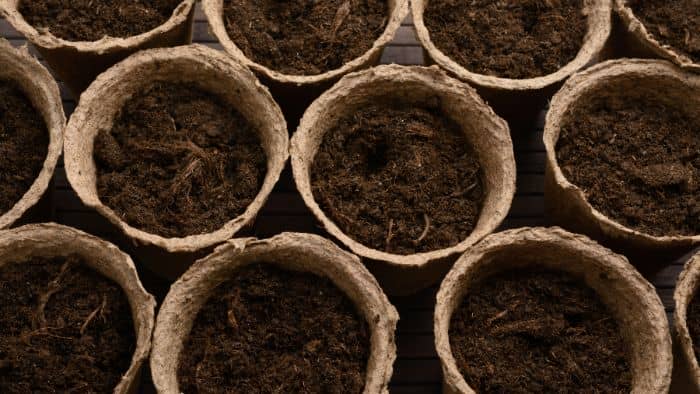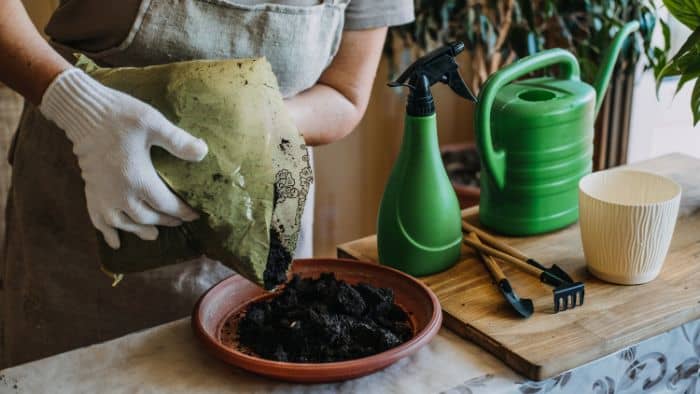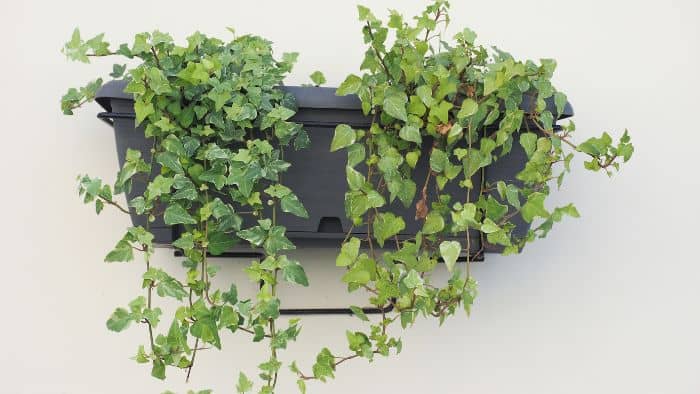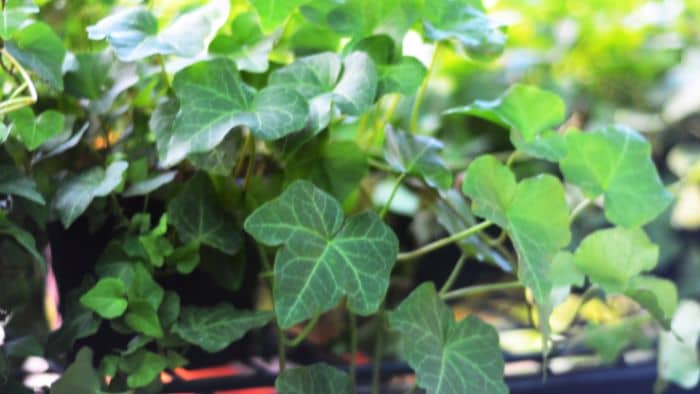If you’re looking for answers to the Best Potting Soil for Ivy, then we have gathered the best information to help you grow healthy and happy plants. Hedera helix, also known as the English ivy, is a perennial plant, categorized as a woody vine. They are known to cover the ground by spreading in a horizontal fashion and are therefore a complement to any landscape or garden.
However, because of its aerial root system, which enables it to ascend to a height of more than 80 feet, it is also a climber. Although the plant will eventually produce small greenish blooms, its evergreen leaves are the main reason it is commonly grown. Spring is the ideal season to plant ivy because, during this time, it grows aggressively and is regarded as invasive.
Because However, these plants are harmful to both humans and animals so keeping a close eye on them is advisable. The information and tips below will help you grow your plant in a nutrient-rich environment with exceptional drainage properties if properly implemented.
How To Grow Ivy
Ivy is a common houseplant that, with the correct care, can thrive in pots. Even though you would typically see them flourishing outdoors, climbing over brick walls or fences, or snaking their way across the ground, proper care and maintenance indoors is vital. For this reason, using the best potting soil for ivy plants is essential to aid them in thriving.

The majority of these plant varieties are low-maintenance. However, there are some strategies to maintain them so that they can reach their peak. They can tolerate some light and thrive in shade with moderate to regular watering. Therefore, it is best to give your ivy bright, indirect light when it’s indoors. These plants grow well in humid environments with moderate temperatures.
Ivies also grow beautifully in pots and hanging baskets and can be trained to form elaborate patterns on walls. Their tendrils have plenty of room to develop when they are in baskets because they can spill over the sides. You can opt to use an all-purpose or indoor planting mix that can be bought at your local nursery. Also, avoid fertilizing too frequently during the warmer months when grown indoors.
Best Potting Soil for Ivy
Ivy will do well in a decent, rich commercial potting mix. However, these plants ought to be cultivated in a drainage-friendly container. They should also be fertilized regularly with a leafy houseplant fertilizer while they are actively growing. But, the best potting soil for ivy is recommended as it has all the nutrients and other specific components that they need to thrive.
Although you may find a variety of soil types available online and at garden centers that are suited to these plants, creating your own mix is highly recommended. This is because you will have control of what goes into it and can therefore amend it to suit your plant’s demands. Take heed of the recommendations below and create your DIY organic-rich ivy soil mix.

Best DIY Potting Soil Mix for Ivy:
– One part of peat moss.
– One part topsoil.
– One part perlite.
– Two parts sand.
Note: Plain Garden soil is not recommended for ivy plants as it may flaw their growth. In dry climes, a heavy layer of mulch helps keep the soil moist while sand helps with efficient drainage. Although these plants are not too fussy about pH levels, ensure that they’re planted in loose, well-drained potting soil. Click on the video for more English ivy care tips!
How To Repot Ivy
It’s time to repot your ivy when it starts to become too heavy or is completely root bound. You should take note of these signs yearly as this is usually the time that it occurs. Also, when you notice your plant drying out too quickly, it is an indication to transfer it.
Keep in mind that the diameter of the new pot shouldn’t be more than an inch or two bigger than the pot it was first grown in. This is because using a container that is too big could result in root rot since the soil would stay damp for too long. Listed below are a few steps that you can follow when repotting your ivy.
Steps:
1. To begin, a fresh bottom layer of well-draining soil should be placed within a container that is one to two inches wider than the plant’s present pot.
2. Turn the plant upside down, being careful not to harm the vines. This will aid you in releasing the roots from the existing container.
3. Thereafter, lightly tap or squeeze the container’s sides to loosen the plant.
4. Then, carefully place your ivy in its new planter.
5. Fill the container with the soil, leaving an inch gap at the top for watering purposes.
6. Now, you can water your newly potted ivy plant thoroughly.
7. Ensure that you have used a planter that has sufficient drainage holes to get rid of the excess moisture.
8. Rewater only when the soil completely dries out.

Note: It is also quite simple to root ivy plants in water. You would simply have to cut off their bottom leaves and arrange them by a window that receives enough light. New roots should form in the water within weeks. Also, remember that your plant can become excessively wilted if it was repotted when root-bound without gently releasing the root ball.
Ivy Care in a Pot
Planting ivy indoors has several advantages which include enhancing your surrounding with its exotic look. This adaptable houseplant is quite hardy and can be grown in a variety of different environments. They can be cultivated in pots, hanging baskets, and the bases of other houseplants according to your preferences.
However, using the best potting soil and affording them the best care will help them thrive. The best part is that you can use trellis frames to shape and train them in pots and hanging baskets. Here are a few care tips that you can implement to grow your plant successfully in pots.
Tips:
- To keep your plant to the size you prefer, trimming them from time to time is advised.
- Small-leafed or slow-growing varieties are simpler to care for in a compact container.
- Plant diseases are very rarely a concern when growing these plants inside. However, that does not mean that it can’t happen if grown in an unhealthy environment.
- The primary issues are either too much or not enough water, as well as insects and mites.
- The main causes of root rot are a slow-draining soil mixture and excessive irrigation, so make sure to monitor these.
- The most frequent ivy plant pests include mealybugs, mites, aphids, whiteflies, and scales. It is best to prune those plant parts out if the affected region is small.
- Wash plants regularly by submerging the leaves in water that has been mixed with insecticidal soap.
- Ensure that the soil is also safeguarded with a light covering of plastic or foil when growing ivies in pots.
- Although the plant may grow more slowly, maintaining them in colder temperatures with sufficient humidity will help prevent some of the most frequent problems.
- When exposed to plant sap, some people experience a skin rash. If you are aware that you have this sensitivity, put on gloves when pruning.
- Give variegated ivy lots of light to keep its vibrant color.

Conclusion
Ivies can be cultivated under artificial light or close to a window facing north, east, or west. Keep in mind that they should be thoroughly watered before the soil is completely dried out. Despite the fact that ivies like moderate humidity, they may live in homes with typically low-temperature levels.
Therefore, in these conditions, it is best to place the plants on a tray filled with moist pebbles or perlite to increase the humidity. Ivies should not be overcrowded as they require sufficient air circulation to stay healthy. Ensure that you use the best potting soil in a container with sufficient drainage holes for successful results.
Ivy cultivars are classified by leaf shape and plant type. This is because it has distinctive flat, five-lobed leaves, which are heart-shaped or triangular. Miniatures, oddities, and variegated types which have leaves that are more than one color or a color other than green are among the different varieties of these plants. Here’s a link with additional information about growing ivy plants.

